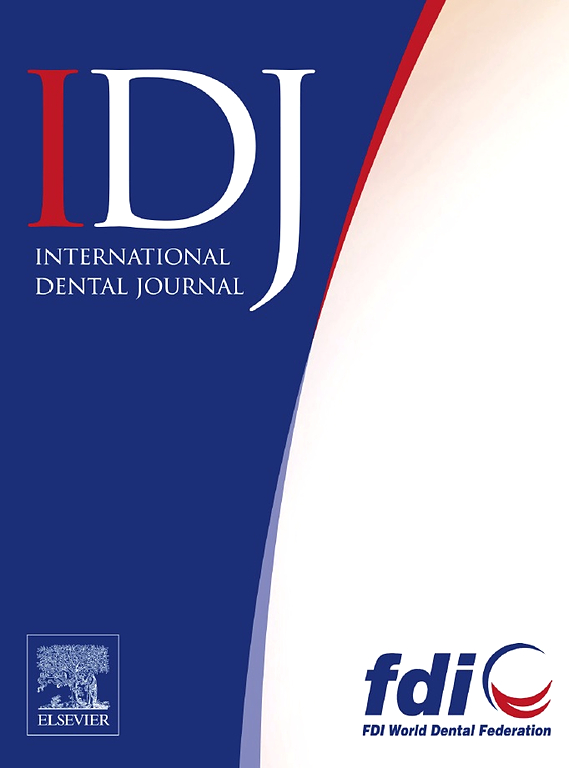ASXL2 Modulates Chromatin Remodeling to Direct Osteogenesis and Multiple Cell Fate in hPDLSCs
IF 3.2
3区 医学
Q1 DENTISTRY, ORAL SURGERY & MEDICINE
引用次数: 0
Abstract
Aims
This study investigates the epigenetic role of Additional Sex Combs-Like 2 (ASXL2) in regulating osteogenic differentiation of human periodontal ligament stem cells (hPDLSCs), aiming to address limitations in current strategies for oral and maxillofacial tissue regeneration.
Methods
Lentiviral-mediated ASXL2 knockdown in hPDLSCs was validated by flow cytometry. Functional impacts were assessed through proliferation/apoptosis assays, alkaline phosphatase (ALP) activity, Alizarin Red mineralization, and qPCR/Western blot analyses of osteogenic markers (RUNX2, ALP, COL1A1, OCN). Global histone modification dynamics (H2AK119ub, H3K27me3, H3K4me3) were detected to elucidate epigenetic mechanisms.
Results
ASXL2 depletion enhanced hPDLSC proliferation and reduced apoptosis, but critically impaired osteogenic differentiation, evidenced by suppressed ALP activity and mineralization. Global downregulation of osteogenic markers is correlated with altered chromatin states: decreased activating H3K4me3 and increased repressive H2AK119ub/H3K27me3.
Conclusion
ASXL2 modulates the osteogenic competency of hPDLSCs through epigenetic regulation, wherein its loss disrupts transcriptional accessibility by skewing histone modification balance: suppressing H3K4me3-mediated activation while amplifying H2AK119ub/H3K27me3-dependent repression to downregulate specific osteogenic genes.
Clinical Relevance
ASXL2 emerges as a pivotal epigenetic target for craniofacial regeneration. Strategic modulation of ASXL2 activity may optimize hPDLSC-based therapies to restore masticatory, pronunciation, and aesthetic functions.
ASXL2调节染色质重塑,指导hPDLSCs成骨和多细胞命运
本研究探讨了附加性梳样2 (ASXL2)在调节人牙周韧带干细胞(hPDLSCs)成骨分化中的表观遗传学作用,旨在解决目前口腔颌面组织再生策略的局限性。方法采用流式细胞术验证slentiviral介导的hPDLSCs中ASXL2的敲低。通过增殖/凋亡实验、碱性磷酸酶(ALP)活性、茜素红矿化和成骨标志物(RUNX2、ALP、COL1A1、OCN)的qPCR/Western blot分析来评估功能影响。通过检测组蛋白修饰的全局动态(H2AK119ub, H3K27me3, H3K4me3)来阐明表观遗传机制。结果asxl2缺失增强了hPDLSC的增殖,减少了凋亡,但严重损害了成骨分化,ALP活性和矿化受到抑制。成骨标志物的全局下调与染色质状态的改变相关:激活H3K4me3的减少和抑制H2AK119ub/H3K27me3的增加。结论asxl2通过表观遗传调控调控hPDLSCs的成骨能力,其中asxl2的缺失通过扭曲组蛋白修饰平衡破坏转录可及性:抑制h3k4me3介导的激活,同时放大H2AK119ub/ h3k27me3依赖性抑制,下调特定成骨基因。easxl2是颅面再生的关键表观遗传学靶点。ASXL2活性的战略性调节可能优化基于hpdlsc的治疗,以恢复咀嚼、发音和审美功能。
本文章由计算机程序翻译,如有差异,请以英文原文为准。
求助全文
约1分钟内获得全文
求助全文
来源期刊

International dental journal
医学-牙科与口腔外科
CiteScore
4.80
自引率
6.10%
发文量
159
审稿时长
63 days
期刊介绍:
The International Dental Journal features peer-reviewed, scientific articles relevant to international oral health issues, as well as practical, informative articles aimed at clinicians.
 求助内容:
求助内容: 应助结果提醒方式:
应助结果提醒方式:


